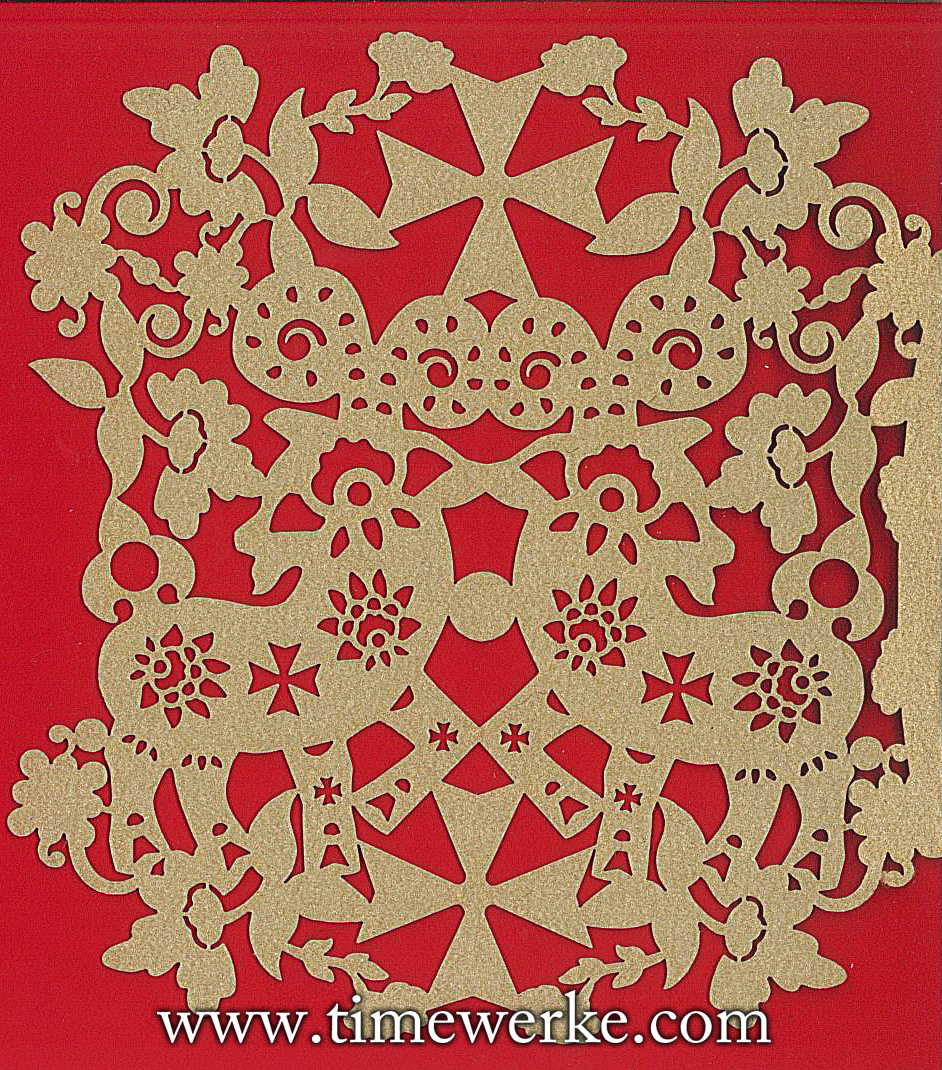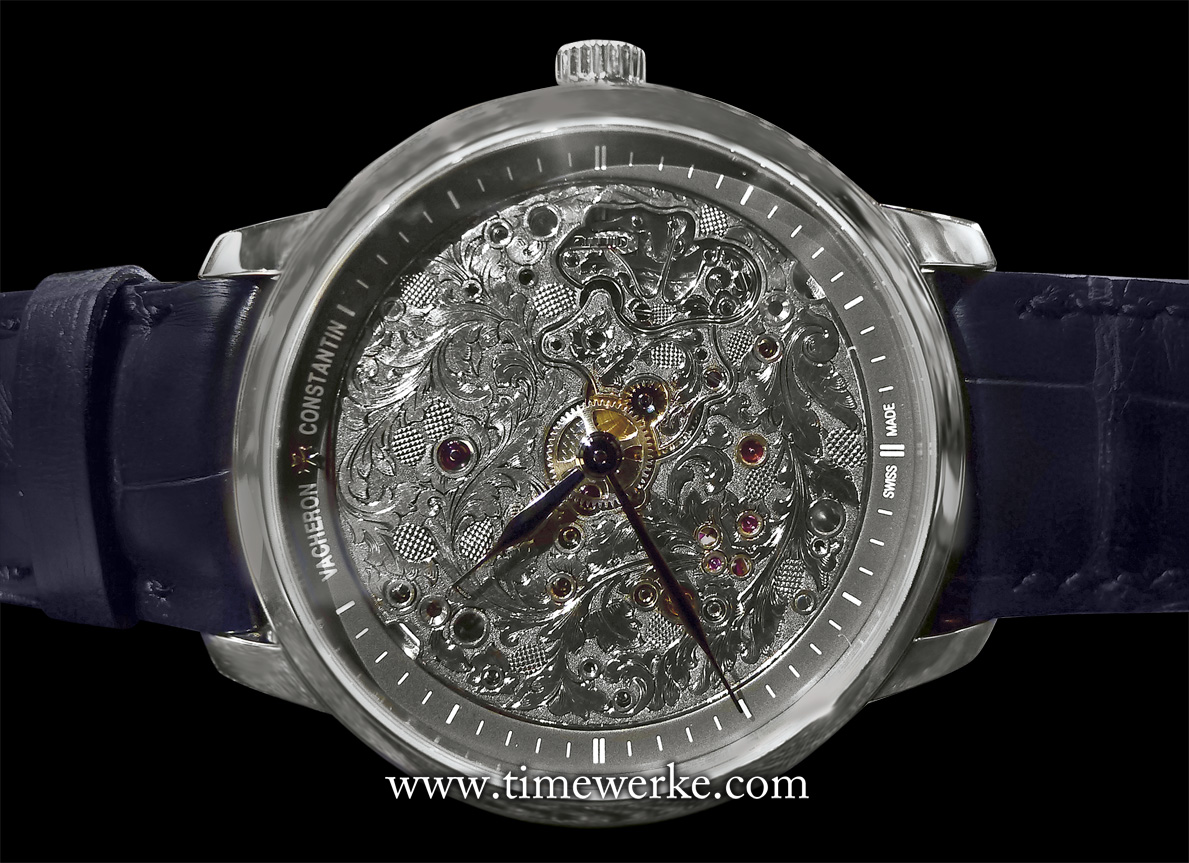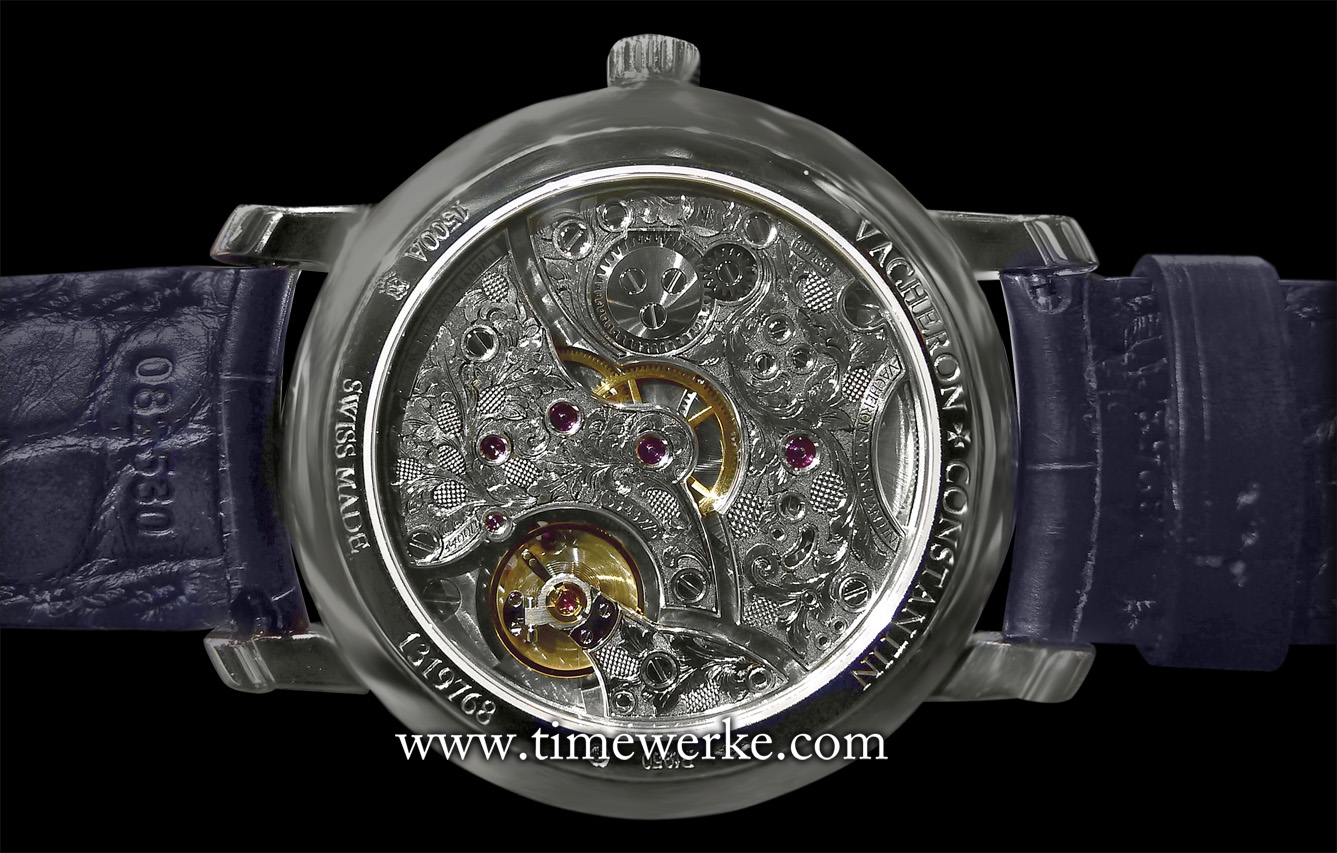
Chinese “paper cut-type” decoration on the Chinese New Year greeting card from Vacheron Constantin. What colours do you see? How many Maltese crosses can you spot? More importantly, as 2015 is the Year of the Goat, can you make out the two goats? Image of Vacheron Constantin’s Chinese New Year card provided by TANG Portfolio
The Chinese Lunar New Year or Spring Festival begins on the second New Moon after the winter solstice and this is usually between mid-January and mid-February.
In 2015, the Chinese Lunar New Year was on 19 February and the 15-day festival ends on 5 March 2015. This is the Year of the Goat and in welcoming the Lunar New Year, it is traditional to wish friends and loved ones good fortune, prosperity and good luck.
This explains the artistic Chinese “paper cut” greeting card from Vacheron Constantin. Now, what colours do you see? It will not be either blue and black or gold and white (a hot discussion topic at the moment because of a dress), but gold on red. There is no biology or science behind this but tradition and artistry including the belief that red and gold are auspicious colours for the Chinese.
Question is, do you see the two goats on this paper cut? You should be able to figure out the legs of the goat, their heads and horns.
Interestingly, some have used sheep this year as the representative zodiac symbol for their decorations including greeting cards because this is a “cuter animal” and the fact that the Chinese word 羊 (pronounced yáng) can be taken to refer to both goats and sheep.
Technically, it is the Year of the Goat; and as highlighted to us by 10-year-old Kendra, the more precise Chinese term for goat is shānyáng while that for sheep is miányáng.
We personally prefer tradition to be kept so we appreciate the fact that Vacheron Constantin had their greeting cards decorated with the two goats or shānyáng.
The year 2015 is also an important one for Vacheron Constantin because it will be 260 years old (1755 to 2015), or should we say, 260 years young (pun must definitely intended).

Vacheron Constantin Métiers d’art Mécaniques Gravées. This beautifully-engraved 39mm watch in platinum houses the Calibre 4400/1 manual-winding movement featuring 65 hours of power reserve. You should be able to clearly make out the floral motifs that pay tribute to the acanthus leaf. Photo: © TANG Portfolio. Elfa / Timmy. 2015 Salon International de la Haute Horlogerie
Among the timepieces launched by Vacheron Constantin at the 2015 Salon International de la Haute Horlogerie in Geneva that symbolises the brand’s 260 years of skill in combining watchmaking techniques and artistic crafts is the Métiers d’art Mécaniques Gravées.
The beauty of Vacheron Constantin’s Métiers d’art Mécaniques Gravées lies in its movement that is entirely hand-engraved. As the timepiece features an openworked dial, you will be able to see the artistic scrolling floral motifs and arabesques that pay tribute to the acanthus leaf from the dial side.
Such engravings, as highlighted by the brand, are reminiscent of those that decorated the earliest Vacheron Constantin pocket watches from 1755 onwards
Acanthus plants originate from the Mediterranean region and its jagged leaf is a symbol of eternity, victory and glory.
Acanthus leaves are engraved on Vacheron Constantin’s Métiers d’art Mécaniques Gravées. In fact, each Calibre 4400/1 movement that is used in the Métiers d’art Mécaniques Gravées requires more than 10 days of engraving work.
You can even view the delicate hand-engraved artwork on the rear of the movement thanks to the open display case back.

Rear view of Vacheron Constantin’s Métiers d’art Mécaniques Gravées with the hand-engraved floral motifs of the acanthus leaves. It takes more than 10 days to engrave each Calibre 4400/1 movement. Photo: © TANG Portfolio. Elfa / Timmy. 2015 Salon International de la Haute Horlogerie
The acanthus leaf, as a stylised ornamental motif used in architecture and the decorative arts, was first used by the Greeks during the fifth century BC on their temple roofs, wall friezes and on the capital of Corinthian columns.
The Romans then used the motif in their Composite order where the capital of the column is a “three-dimensional combination of spirals that resemble rams’ horns and acanthus leaves”, according to the Encyclopædia Britannica.
Rams’ horns? That link brings us back to sheep; male sheep are known as rams while females are ewes. Male goats on the other hand, are termed bucks or billies, the females are does or nannies and young goats are kids.
If we were to use the Chinese word 羊 liberally, then we would have gone one full circle and returned back to the topic of the goat.
Speaking of the goat, in particular the Year of the Goat, we wish the good folks at Vacheron Constantin and all our readers a prosperous and fantastic Lunar New Year!


